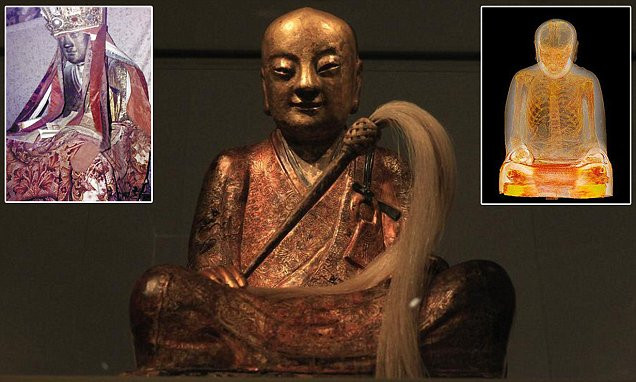An Unexpected Revelation Through Modern Technology
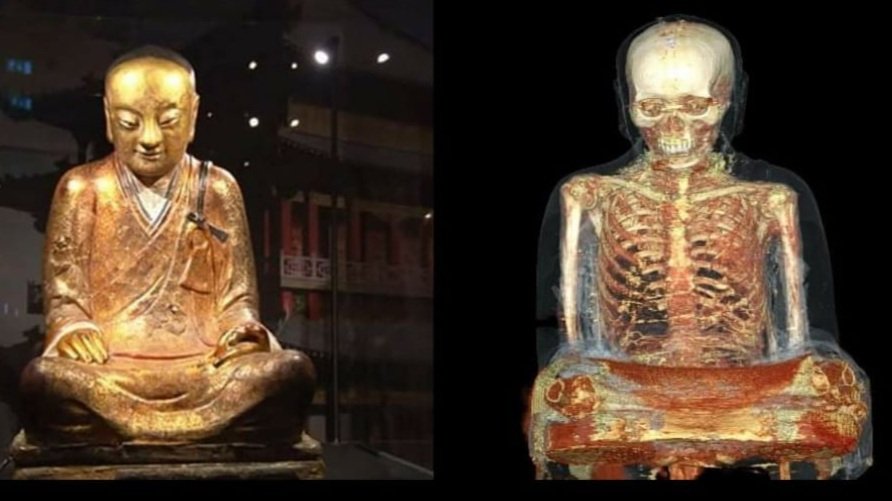
In a remarkable convergence of art, spirituality, and scientific advancement, a CT scan of an ancient Buddha statue from China unveiled a startling secret – the mummified remains of a Buddhist monk from the 11th century. This extraordinary discovery at the Drents Museum in the Netherlands has captivated researchers, historians, and spiritual enthusiasts alike, providing profound insights into the religious practices and mummification techniques of ancient Buddhists.
The Enigmatic Statue and Its Hidden Tenant
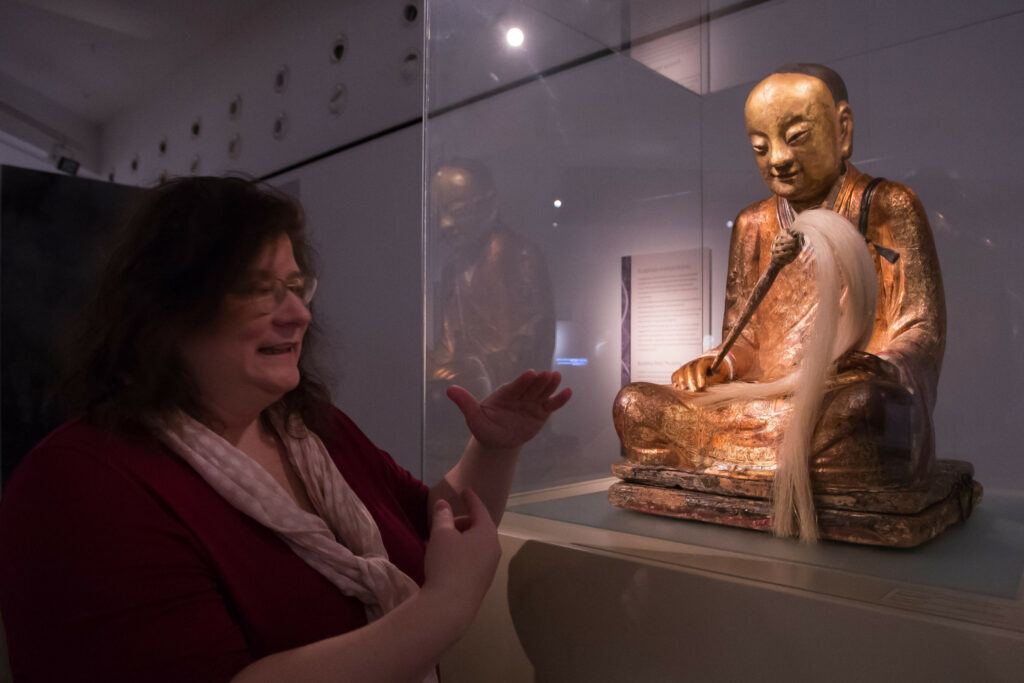
The Buddha statue in question, standing at an impressive 1.2 meters tall and adorned in gold-painted papier-mâché, had been a part of a private collection before being loaned to the museum. Little did anyone suspect that within its serene and meditative posture lay a remarkable secret – the mummified body of a monk, seated in the iconic lotus position.
The Path to Self-Mummification: Sokushinbutsu
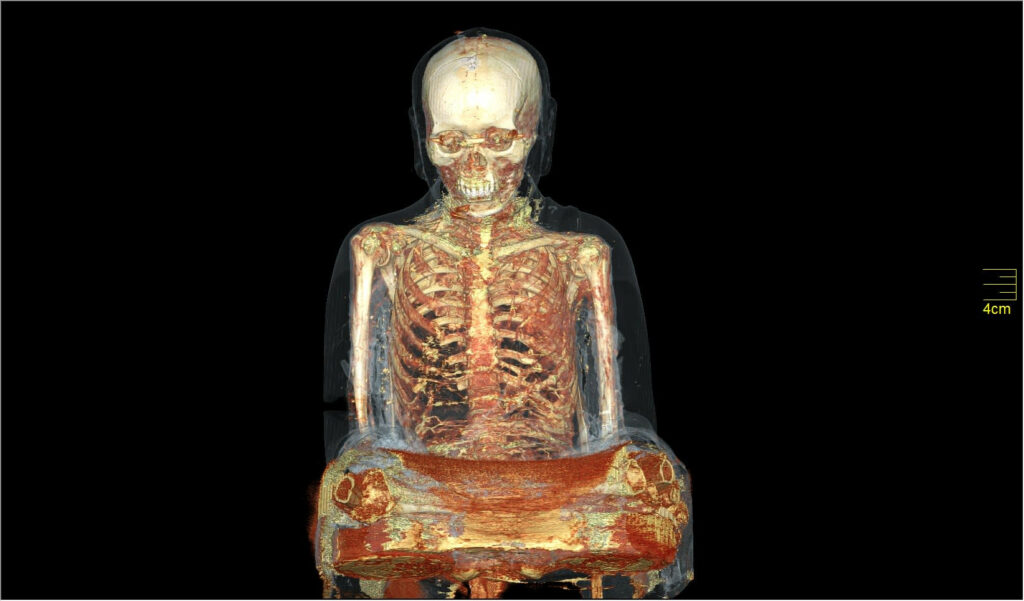
The mummified remains are a testament to the extreme ascetic practice known as “sokushinbutsu,” or self-mummification, pursued by some Buddhist monks in Japan and China between the 11th and 19th centuries. This arduous journey towards Buddhahood involved several stages:
Preparation and Fasting
The monk would embark on a strict diet, consuming only nuts, seeds, and berries to eliminate body fat, a process that could last for several years.
Dietary Restrictions and Preservation
As the diet became progressively restrictive, the monk would eventually ingest a toxic tea made from the sap of the urushi tree, acting as a preservative and killing bacteria and parasites that could cause decay.
Seclusion, Meditation, and Final Breath
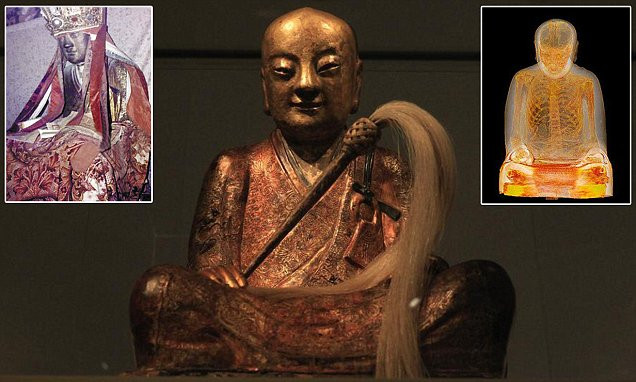
The monk would retreat into a stone tomb, barely larger than their body, sitting in the lotus position and meditating until death. A small air tube allowed them to breathe, and a bell was rung to signal their continued life. Once the bell ceased, the air tube was removed, and the tomb was sealed.
Mummification and Enshrinement
After several years, the tomb would be opened to check the state of the body. If well-preserved, the monk was enshrined and revered as a “Living Buddha.”
Scientific Insights and Cultural Significance
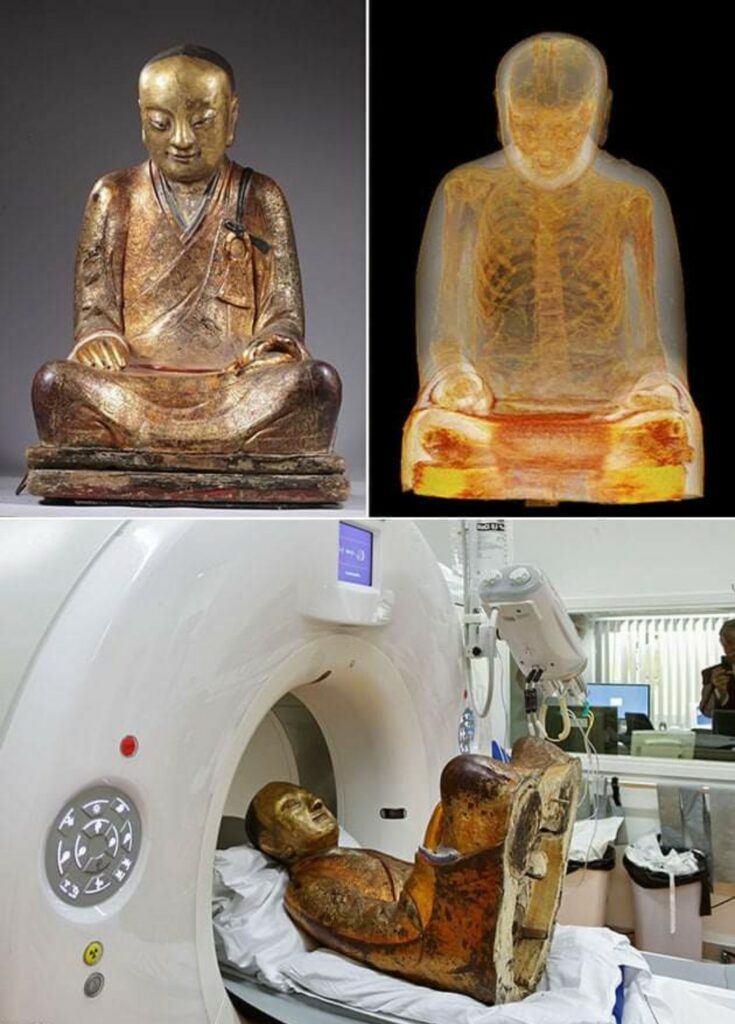
Through advanced imaging techniques and endoscopic examinations, researchers gained invaluable insights into the mummified remains and the cultural context of the time. The monk’s internal organs had been removed and replaced with paper scraps covered in Chinese characters, likely prayers or religious texts. DNA analysis and carbon dating further authenticated the age of the remains, placing them in the 11th century.
Preserving History with Respect
This discovery has not only enriched our understanding of Buddhist history and practices but also raised ethical considerations regarding the treatment and display of human remains. The Drents Museum has taken great care to ensure that the exhibit is conducted with utmost respect and dignity, providing context and reverence for the monk’s sacrifice and spiritual journey.
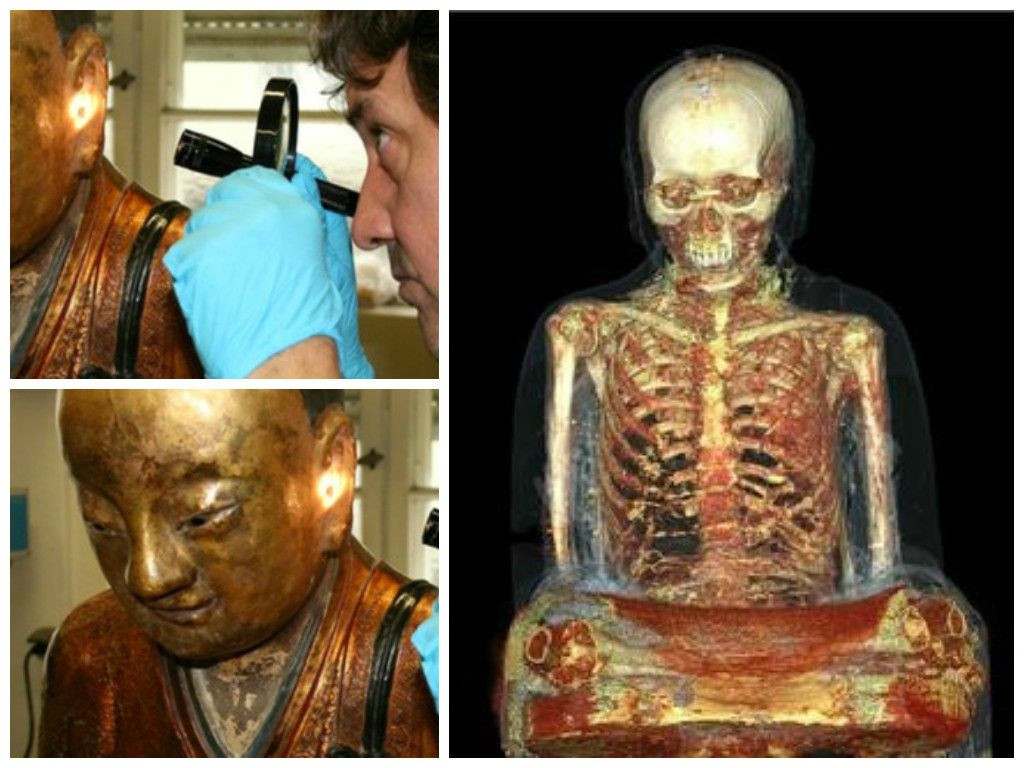
As the world marvels at this astonishing discovery, it serves as a powerful reminder of the enduring legacy of spiritual devotion across centuries and the incredible insights that can be gained through the synergy of art, science, and cultural exploration.
